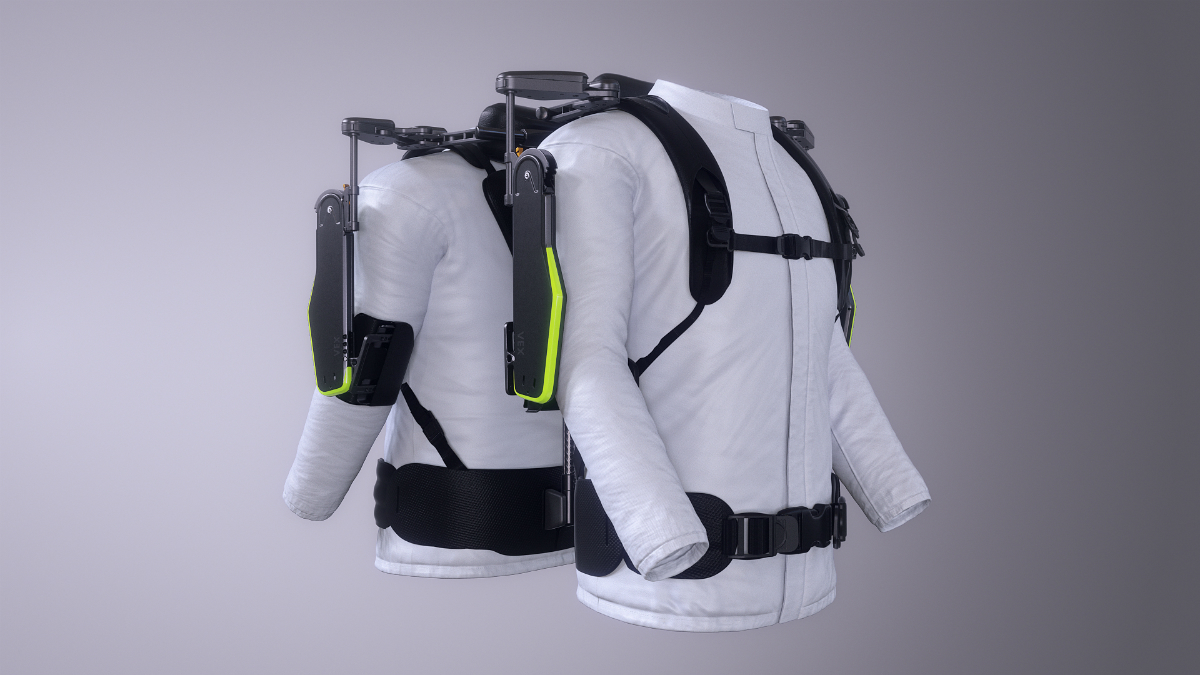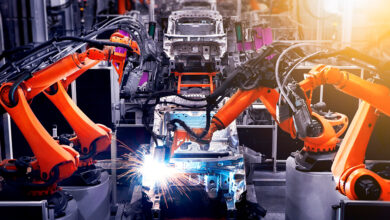Hyundai Develops Exoskeleton to Alleviate Burden in Overhead Work

Hyundai Motor Group has developed a wearable robot, called the Vest Exoskeleton (VEX), created to assist industrial workers who spend long hours working in overhead environments.
The VEX aims to reduce fatigue of industrial workers by imitating the movement of human joints to boost load support and mobility. The wearable vest has polycentric axes – combining multiple pivot points with multi-link muscular assistance – to function, eliminating the need for a battery.
The VEX weighs in at 5.5 pounds and is worn like a backpack. Users place their arms through the shoulder straps of the vest, then fasten the chest and waist buckles. The back section can adjust in length by up to about 7 inches to fit a variety of body sizes, while the degree of force assistance can be adjusted over six levels – up to as much as 12.1 foot-pounds.
“VEX gives workers greater load support, mobility, and adaptability when operating in overhead environments.” stated DongJin Hyun, head of Robotics team of Hyundai Motor Group. “Workers will also appreciate how light VEX is to wear and work with.”
The VEX is targeted at production-line workers whose job is primarily overhead, such as those bolting the underside of vehicles, fitting brake tubes and attaching exhausts. The development of the VEX included a pilot program in two Hyundai Motor Group plants in the US. The company deemed the trial successful in assisting workers and boosting productivity. Both plants incorporated VEX systems in their production lines.
The Group is considering implementing the VEX in plants around the world.



